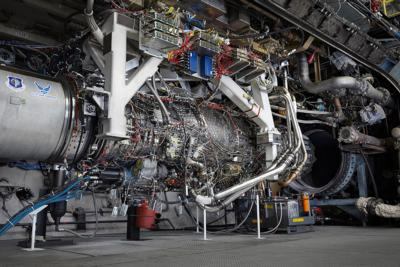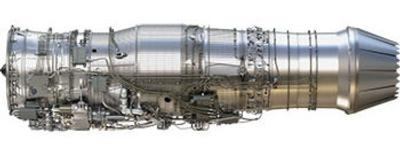Mon, Sep 19, 2022
Adaptive Cycle F-35 Engine Replacement Continues Path to Development With Promising Future
GE has finished another phase of testing the XA100 adaptive cycle engine at the US Air Force Arnold Engineering Development Complex, ending their work at the facility as it moves on to completion.

The Air Force’s Adaptive Engine Transition Program (AETP) has been an ongoing project between GE Aviation and the USAF, aiming to develop a next-gen engine to fully outfit the F-35 Lightning II with a future-forward engine system. As GE puts a cap on its time at the Arnold Complex, they took a moment to look back at the headway made on the project. Their time at the USAF facility was fruitful, managing to pass milestones like the first flight-weight, 3-stream adaptive cycle engine test. That unit was the basis of "the most heavily instrumented engine test in GE and Air Force history", segueing into a 2-year process that ended earlier this month.
The current iteration of the XA100 stands more mature than ever before, offering an adaptive engine cycle that provides both a high-thrust, max-power mode in addition to an economical setting to allow for optimum fuel burn and maximum loiter time. Its architecture makes extensive use of advanced, next-generation materials and construction methods, from ceramic matrix composites to 3D-printed interior parts to simplify complexity within the engine. Perhaps best of all, this clean-sheet design is expected to leave much more "headroom" for future advancement, allowing future mission systems to make adjustments and advancements as tech improves. Right now, the XA100 provides a 10% thrust increase, 25% fuel economy boost, and greatly enhanced heat dissipation capacity within the same physical constraints as the current F-35A engine system. The Marine Corps' F-35C will be able to use the powerplant with some tailhook modifications. In line with overarching emissions goals for the service, the XA100 will
significantly reduce carbon emissions while operating on any USAF-approved sustainable aviation fuel.

“This engine isn’t a concept, proposal, or research program. This is a flight-weight, highly product-relevant engine that would provide the F-35 with 30% more range, greater than 20% faster acceleration, and significant mission systems growth to harness the F-35’s full capabilities for Block 4 upgrades, and beyond,” Tweedie continued. “The XA100 is the only F-35 propulsion modernization option that has been built, fully tested, and evaluated against Air Force performance targets, and the only option that provides the Air Force the capability it needs to outpace its adversaries for decades to come.”
More News
He Attempted To Restart The Engine Three Times. On The Third Restart Attempt, He Noticed That Flames Were Coming Out From The Right Wing Near The Fuel Cap Analysis: The pilot repor>[...]
Make Sure You NEVER Miss A New Story From Aero-News Network Do you ever feel like you never see posts from a certain person or page on Facebook or Instagram? Here’s how you c>[...]
From 2009 (YouTube Edition): Leading Air Show Performers Give Their Best Advice for Newcomers On December 6th through December 9th, the Paris Las Vegas Hotel hosted over 1,500 air >[...]
Aero Linx: NASA ASRS ASRS captures confidential reports, analyzes the resulting aviation safety data, and disseminates vital information to the aviation community. The ASRS is an i>[...]
“For our inaugural Pylon Racing Seminar in Roswell, we were thrilled to certify 60 pilots across our six closed-course pylon race classes. Not only did this year’s PRS >[...]
 NTSB Final Report: Rutan Long-EZ
NTSB Final Report: Rutan Long-EZ ANN FAQ: Turn On Post Notifications
ANN FAQ: Turn On Post Notifications Classic Aero-TV: ICAS Perspectives - Advice for New Air Show Performers
Classic Aero-TV: ICAS Perspectives - Advice for New Air Show Performers ANN's Daily Aero-Linx (06.28.25)
ANN's Daily Aero-Linx (06.28.25) Aero-News: Quote of the Day (06.28.25)
Aero-News: Quote of the Day (06.28.25)




